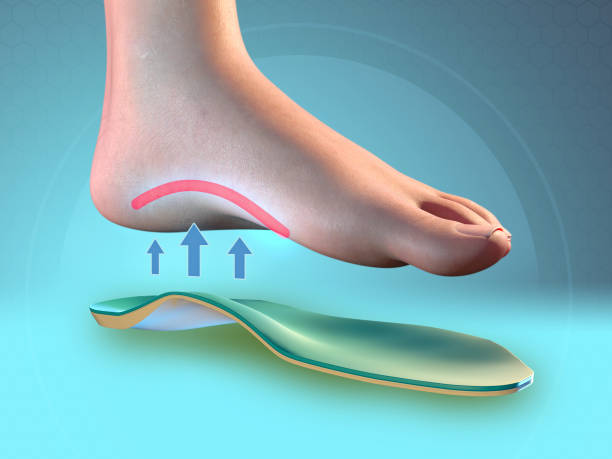Plantar fasciitis is a common foot ailment that affects millions of people worldwide, causing sharp heel pain and discomfort, especially during the first steps of the day. While there are various treatments available, one of the most effective and immediate solutions is the use of specialized insoles. In this comprehensive guide, we will explore everything you need to know about plantar fasciitis insoles, including how they work, the benefits they offer, and how to choose the right pair for your needs.
Understanding Plantar Fasciitis
Plantar fasciitis is an inflammation of the plantar fascia, a thick band of tissue that runs along the bottom of your foot, connecting your heel bone to your toes. This condition often results from overuse, improper footwear, or certain biomechanical issues such as flat feet or high arches. The inflammation causes significant pain, particularly in the heel area, which can be debilitating and affect daily activities.
How Insoles Help with Plantar Fasciitis
Insoles designed for plantar fasciitis provide targeted support and cushioning to the foot, alleviating pressure on the plantar fascia and reducing inflammation. These insoles typically feature arch support, deep heel cups, and shock-absorbing materials that work together to enhance foot alignment and distribute weight more evenly across the foot. By doing so, they help reduce the strain on the plantar fascia, promote healing, and prevent further injury.
Benefits of Using Plantar Fasciitis Insoles
The primary benefit of plantar fasciitis insoles is pain relief. By supporting the arch and cushioning the heel, these insoles can significantly reduce the discomfort associated with plantar fasciitis. Additionally, insoles improve overall foot mechanics, which can prevent the condition from worsening and reduce the risk of other foot problems. They also enhance comfort during daily activities, making it easier to walk, stand, and exercise without pain. Moreover, using insoles can potentially reduce the need for more invasive treatments, such as corticosteroid injections or surgery.
Choosing the Right Plantar Fasciitis Insoles
When selecting insoles for plantar fasciitis, several factors should be considered to ensure you get the most effective solution for your condition. Firstly, look for insoles with adequate arch support that matches your foot type. Whether you have flat feet, neutral arches, or high arches, the right level of support is crucial. Secondly, consider the material of the insoles. High-quality insoles are usually made from durable, shock-absorbing materials like gel or memory foam, which provide excellent cushioning. Additionally, the insole should have a deep heel cup to stabilize your foot and distribute pressure evenly. It is also important to choose insoles that fit well in your shoes, as improper fit can negate the benefits and cause additional discomfort.
Custom vs. Over-the-Counter Insoles
There are two main types of insoles available: custom and over-the-counter (OTC). Custom insoles are made specifically for your feet, based on a mold or 3D scan, and provide personalized support tailored to your unique foot structure. While they can be more expensive, custom insoles often offer superior comfort and effectiveness. On the other hand, OTC insoles are pre-made and available in various sizes and arch types. They are more affordable and widely accessible, making them a popular choice for many individuals. While they may not provide the same level of customization as custom insoles, OTC options can still offer significant relief when chosen correctly.
How to Use Plantar Fasciitis Insoles
To get the most benefit from your plantar fasciitis insoles, it is important to use them consistently and correctly. Start by inserting the insoles into your shoes, ensuring they lay flat and do not cause any bunching or discomfort. Gradually break in the insoles by wearing them for short periods initially and increasing the duration over a week or so. This allows your feet to adjust to the new support. Additionally, replace your insoles regularly, as they can wear out over time and lose their effectiveness. Depending on the material and usage, insoles may need to be replaced every six months to a year.
Additional Tips for Managing Plantar Fasciitis
While insoles are an effective treatment, combining them with other management strategies can enhance your recovery and prevent recurrence. Stretching exercises, particularly those targeting the calf muscles and plantar fascia, can help maintain flexibility and reduce tension. Icing the affected area can also reduce inflammation and pain. Additionally, wearing supportive footwear that offers good arch support and cushioning, avoiding walking barefoot on hard surfaces, and maintaining a healthy weight can all contribute to managing and preventing plantar fasciitis.
Conclusion: Invest in Your Foot Health
Insoles for plantar fasciitis are a simple yet highly effective solution for managing heel pain and improving foot health. By providing targeted support and cushioning, they can alleviate discomfort, enhance foot mechanics, and prevent further injury. Whether you opt for custom-made insoles or high-quality over-the-counter options, the right pair of insoles can make a significant difference in your daily comfort and overall well-being. Combined with other preventive measures and treatments, insoles can help you take control of your plantar fasciitis and enjoy a more active, pain-free lifestyle. Investing in your foot health is crucial, and the right insoles are a step in the right direction.




